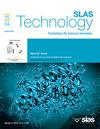三合一染色:一个全自动和零浪费的流式细胞术染色系统,促进3R到4R的过渡。
IF 3.7
4区 医学
Q3 BIOCHEMICAL RESEARCH METHODS
引用次数: 0
摘要
尽管在仪器和机器人技术方面取得了重大进展,但流式细胞术中细胞染色的自动化在很大程度上仍未得到解决。虽然流式细胞术中的样品采集已经完全自动化,但样品染色仍然是一个主要的人工过程-需要大量的时间,劳动力和成本。此外,手工染色的重复性引入了单调性,增加了人为错误的可能性。这里介绍的染色三合一实现了染色过程的完全自动化,只需要输入样品和试剂,无需人工干预。使用染色三合一进行的染色显示出与传统手工染色相当的生物标志物特征。模块化和适应性强的系统设计提供了灵活性,以定制吞吐量和适应分析特定的要求,从而扩展其适用于基于板的配体结合分析。此外,该系统消除了对移液头的需求,体现了一个复杂和可持续的解决方案,提高了实验室效率,同时减少了人为错误和流式细胞术染色中塑料废物的主要来源。尽管3R倡议(减少、再利用、再循环)帮助减少了实验室塑料废物的数量,但仍有大量塑料被焚烧或最终进入垃圾填埋场,在那里它们在环境中存留了几十年。这一限制强调了将第四个R——“移除/替换”——纳入可持续发展战略的必要性。随着流式细胞术在各种生物技术学科中越来越不可或缺,简化相关工作流程以加速药物发现,同时保护维持生命的环境势在必行。本文章由计算机程序翻译,如有差异,请以英文原文为准。
Staining Triad: A fully automated and zero-waste flow cytometry staining system fostering the 3R to 4R transition
Despite significant advances in instrumentation and robotics, the automation of cell staining in flow cytometry remains largely unaddressed. While sample acquisition in flow cytometry has been fully automated, sample staining continues to be a predominantly manual process—requiring substantial time, labor, and cost. Additionally, the repetitive nature of manual staining introduces monotony and increases the likelihood of human error. The Staining Triad presented here achieves full automation of the staining process, requiring only the input of samples and reagents, with no manual intervention. Staining performed using the Staining Triad showed a comparable biomarker profile to that of conventional manual staining. The modular and adaptable system design enables the flexibility to tailor throughput and accommodate assay-specific requirements, thereby extending its applicability to plate-based ligand binding assays. Moreover, the system eliminates the need for pipette tips, exemplifying a sophisticated and sustainable solution that enhances laboratory efficiency while reducing human error and the primary source of plastic waste in flow cytometry staining. Although 3R initiatives (Reduce, Reuse, Recycle) have helped decrease laboratory plastic waste volumes, substantial amounts are still incinerated or end up in landfills, where they persist in the environment for decades. This limitation underscores the need to incorporate a fourth R—"Remove/Replace"—into sustainability strategies. As flow cytometry becomes increasingly integral across various biotechnology disciplines, it is imperative to streamline associated workflows to accelerate drug discovery while preserving the environment that sustains life.
求助全文
通过发布文献求助,成功后即可免费获取论文全文。
去求助
来源期刊

SLAS Technology
Computer Science-Computer Science Applications
CiteScore
6.30
自引率
7.40%
发文量
47
审稿时长
106 days
期刊介绍:
SLAS Technology emphasizes scientific and technical advances that enable and improve life sciences research and development; drug-delivery; diagnostics; biomedical and molecular imaging; and personalized and precision medicine. This includes high-throughput and other laboratory automation technologies; micro/nanotechnologies; analytical, separation and quantitative techniques; synthetic chemistry and biology; informatics (data analysis, statistics, bio, genomic and chemoinformatics); and more.
 求助内容:
求助内容: 应助结果提醒方式:
应助结果提醒方式:


